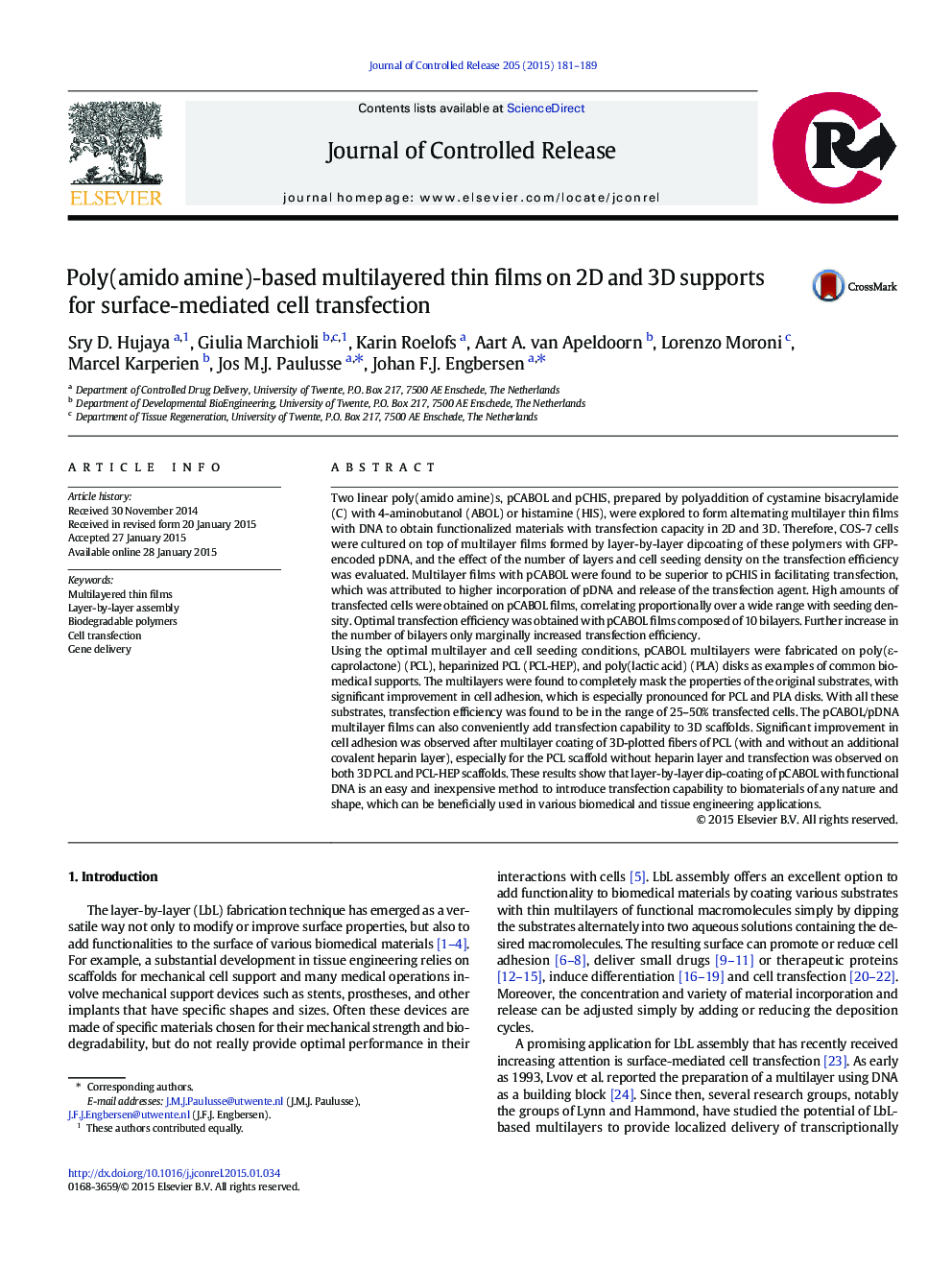| کد مقاله | کد نشریه | سال انتشار | مقاله انگلیسی | نسخه تمام متن |
|---|---|---|---|---|
| 1423771 | 1509044 | 2015 | 9 صفحه PDF | دانلود رایگان |

Two linear poly(amido amine)s, pCABOL and pCHIS, prepared by polyaddition of cystamine bisacrylamide (C) with 4-aminobutanol (ABOL) or histamine (HIS), were explored to form alternating multilayer thin films with DNA to obtain functionalized materials with transfection capacity in 2D and 3D. Therefore, COS-7 cells were cultured on top of multilayer films formed by layer-by-layer dipcoating of these polymers with GFP-encoded pDNA, and the effect of the number of layers and cell seeding density on the transfection efficiency was evaluated. Multilayer films with pCABOL were found to be superior to pCHIS in facilitating transfection, which was attributed to higher incorporation of pDNA and release of the transfection agent. High amounts of transfected cells were obtained on pCABOL films, correlating proportionally over a wide range with seeding density. Optimal transfection efficiency was obtained with pCABOL films composed of 10 bilayers. Further increase in the number of bilayers only marginally increased transfection efficiency.Using the optimal multilayer and cell seeding conditions, pCABOL multilayers were fabricated on poly(ε-caprolactone) (PCL), heparinized PCL (PCL-HEP), and poly(lactic acid) (PLA) disks as examples of common biomedical supports. The multilayers were found to completely mask the properties of the original substrates, with significant improvement in cell adhesion, which is especially pronounced for PCL and PLA disks. With all these substrates, transfection efficiency was found to be in the range of 25–50% transfected cells. The pCABOL/pDNA multilayer films can also conveniently add transfection capability to 3D scaffolds. Significant improvement in cell adhesion was observed after multilayer coating of 3D-plotted fibers of PCL (with and without an additional covalent heparin layer), especially for the PCL scaffold without heparin layer and transfection was observed on both 3D PCL and PCL-HEP scaffolds. These results show that layer-by-layer dip-coating of pCABOL with functional DNA is an easy and inexpensive method to introduce transfection capability to biomaterials of any nature and shape, which can be beneficially used in various biomedical and tissue engineering applications.
Figure optionsDownload high-quality image (242 K)Download as PowerPoint slide
Journal: Journal of Controlled Release - Volume 205, 10 May 2015, Pages 181–189